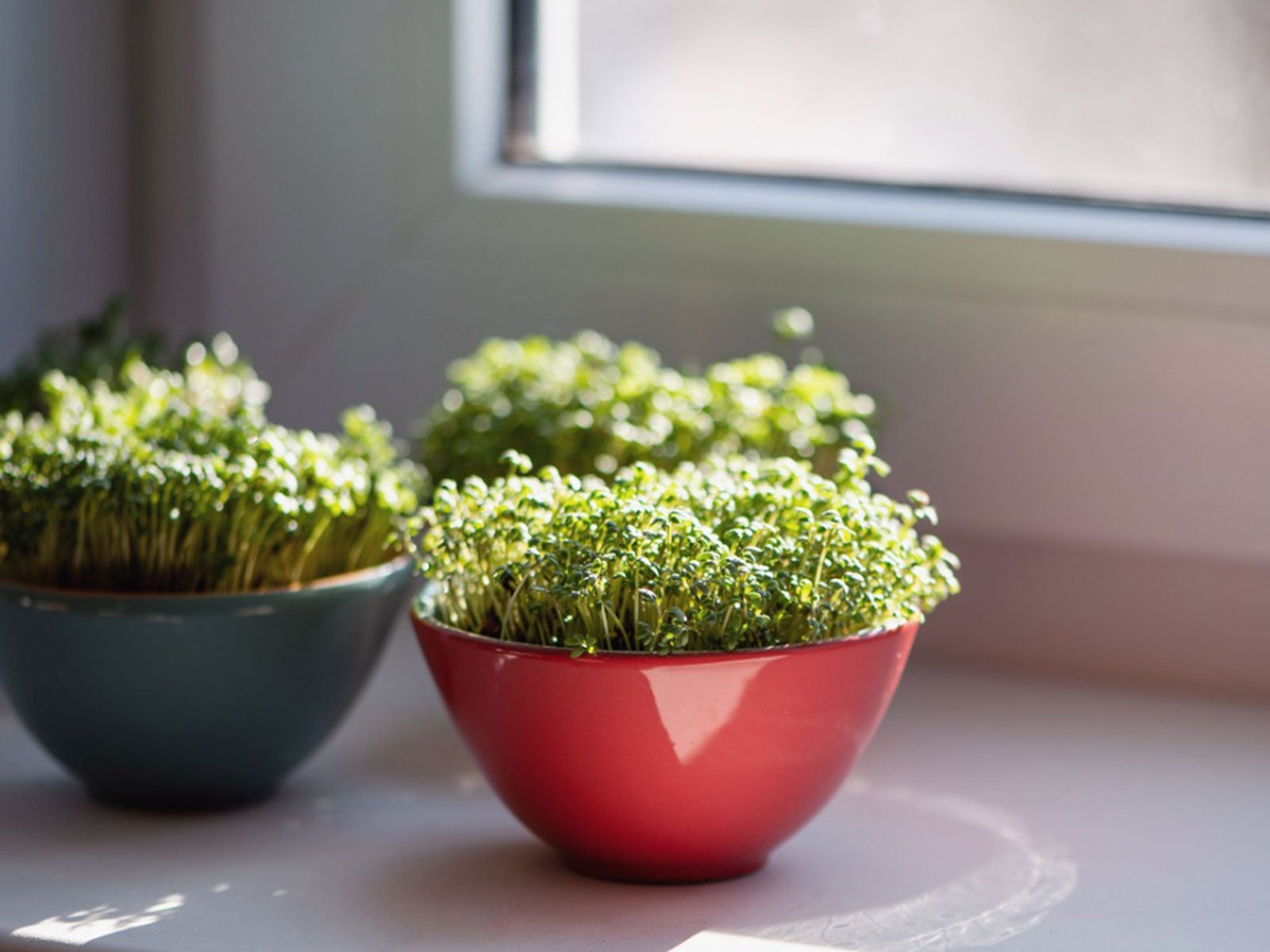Edible Indoor Plants – Best Edibles To Grow Inside


Which are the best vegetables to grow indoors? Growing garden vegetables as edible houseplants is not only an ideal solution for those who lack outdoor gardening space, but it can also provide any family with fresh homegrown produce year-round. If this sounds intriguing, let's look at the most productive and easiest edibles to grow inside the house.
Easy-To-Grow Edible Indoor Plants
By far, leafy greens are one of the easiest indoor edibles to grow. These fast growing and shallow-rooted veggies require a minimum of four to six hours of direct sunlight and can often be grown in a southern-facing window in the dead of winter. Most leafy greens can be planted 4 to 6 inches (10-15 cm.) apart in 4 inch (10 cm.) tall containers. Here are some excellent leafy edibles to grow inside the house:
Herbs are another one of the edible houseplants which are prolific and easy to grow in a sunny window. Many herbs have attractive foliage and impart a lovely aroma to the room.
A 4 inch (10 cm.) pot will suffice for smaller, leafy herbs. Woody plants, like rosemary, require a larger and deeper planter. Try growing these favorite culinary herbs as fresh indoor edibles:
Root Vegetables to Grow Indoors
Root vegetables are another option for easy vegetables to grow indoors. Depending upon the variety, root vegetables generally need a deeper container and may take longer to mature than many leafy greens. Here are popular choices of root vegetables to grow inside the house:
Cruciferous Indoor Edibles
If you have a cooler room with a sunny window, members of the cabbage family can be ideal vegetables to grow indoors. While not difficult to cultivate, days to maturity can range between three and six months.
Production may also be limited to one head of cabbage or one primary broccoli or cauliflower head per pot. Consider these cruciferous culinary favorites:
Gardening tips, videos, info and more delivered right to your inbox!
Sign up for the Gardening Know How newsletter today and receive a free copy of our e-book "How to Grow Delicious Tomatoes".
Difficult Edibles to Grow Inside
Fruiting and vining plants are the among the most difficult to grow as edible houseplants. Many of these vegetables require eight to ten hours of sunlight to produce blossoms and fruit. Supplying artificial light is usually required, especially for winter cultivation. Additionally, even self-fertilizing species may need help with pollination.
For the best chance of success, stick with compact varieties or greenhouse cultivars. These varieties grow well in containers and can be quite productive. Use a large planter and limit plants to one per pot. If you're willing to take on the challenge, try growing these fruiting and vining edible indoor plants:

Laura Miller has been gardening all her life. Holding a degree in Biology, Nutrition, and Agriculture, Laura's area of expertise is vegetables, herbs, and all things edible. She lives in Ohio.
-
 Looking For Plants To Give You The Soft And Fuzzies? Try These 5 Fuzzy Leaf Plant Options
Looking For Plants To Give You The Soft And Fuzzies? Try These 5 Fuzzy Leaf Plant OptionsLovers of texture, drama, silver foliage and tactile plants will adore these special sensory garden additions. These fuzzy leaf plant options will leave you all aglow
By Susan Albert
-
 Get Ready For A Summer Of Hummers! Grow These Full Sun Hummingbird Plants and Flowers
Get Ready For A Summer Of Hummers! Grow These Full Sun Hummingbird Plants and FlowersIf you’re lucky enough to enjoy a sunny backyard, make sure you are maxing out on your pollinator opportunities and grow these full sun hummingbird plants and flowers
By Tonya Barnett
-
 8 Easy Care Houseplants That Live A Long Time
8 Easy Care Houseplants That Live A Long TimeClick here to learn about our 8 favorite low maintenance houseplants that can, with proper care, live a long time.
By Amy Grant
-
 How Often Should You Repot Plants?
How Often Should You Repot Plants?Escaping roots and shrinking leaves may mean your plant wants a new pot, but some like staying cramped and cozy.
By Mary Ellen Ellis
-
 Orange Flowering Houseplant Varieties With Tropical Flair
Orange Flowering Houseplant Varieties With Tropical FlairClick here to learn about some cheerful orange-blooming houseplants you can try growing.
By Mary Ellen Ellis
-
 Variegated Houseplants With Lovely Leaves
Variegated Houseplants With Lovely LeavesWhat are some of the best variegated houseplants to add to your collection? Click here to find out.
By Amy Grant
-
 Lovely, Lacy Indoor Foliage Plants
Lovely, Lacy Indoor Foliage PlantsClick here to learn about some houseplants with lacy foliage to add to your collection.
By Mary Ellen Ellis
-
 Best Christmas Houseplants And Plants For Winter Holidays
Best Christmas Houseplants And Plants For Winter HolidaysClick here for an idea of the best houseplants to use for holiday décor for Christmas, Hanukkah, Kwanzaa, and New Year’s.
By Laura Miller
-
 Best Big Houseplants To Create An Indoor Oasis
Best Big Houseplants To Create An Indoor OasisIf you have the space you may want to grow some large houseplants. Here are some ideas.
By Mary Ellen Ellis
-
 Relaxing Plants To Grow Indoors For A Calmer Mind
Relaxing Plants To Grow Indoors For A Calmer MindAre there houseplants that can help you to relax? Click here to find out.
By Laura Miller